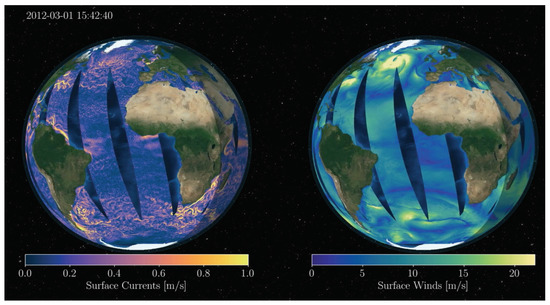Current, Planned, and Future Satellite Missions: Guidelines for Data Exploitation by the Remote Sensing Community
A topical collection in Remote Sensing (ISSN 2072-4292). This collection belongs to the section "Satellite Missions for Earth and Planetary Exploration".
Viewed by 4334Editors
Interests: optical remote sensing; imaging spectroscopy; vegetation fluorescence; vegetation biophysical parameters; land surface applications; optical reflectance/fluorescence models; retrieval methods; design of future earth observation missions; dynamical vegetation models; calibration/validation field campaigns
Special Issues, Collections and Topics in MDPI journals
Interests: hydrogeology; geomorphology; natural hazards; land use/cover changes; optical/radar remote sensing
Special Issues, Collections and Topics in MDPI journals
Interests: bistatic spaceborne SAR imaging technology; high-resolution spaceborne SAR systems and data processing
Special Issues, Collections and Topics in MDPI journals
Topical Collection Information
Dear Colleagues,
Articles written in tutorial style are becoming increasingly popular and denote a new trend in remote sensing (RS) publications. The large number of satellite missions currently in operation or to be launched in the near future is putting pressure on the RS user community (newcomers as well as experienced users) to keep up to date with the new technology advances and the vast variety of RS datasets and tools. It is difficult for scholars and practitioners, even for experts, to keep up with so many new and rapidly evolving scientific and technological developments, and to explore and exploit new types of data as they become available for science and applications.
In response to this trend, space agencies and data providers are embarking on an effort to provide not only the data but also the tools for users to visualize and explore such large volumes of data (through models and data assimilation or using big data, machine learning approaches). However, the diversity of satellite missions means that data types are handled by different processing centers and/or require different algorithms/approaches depending on the mission. Many applications require combinations of multiple datasets collected by a variety of satellite missions that are sometimes distributed by different agencies or research institutions. This may cause an additional problem, namely that data derived from the same source are mutually inconsistent due to different data processing strategies. Consequently, guidelines that ensure proper usage of the data, especially by inexperienced users, are becoming absolutely necessary.
Responding to this need for guidelines, we have set up a collection consisting of tutorial-style articles in the Satellite Missions for Earth and Planetary Exploration Section. Ideally, articles should be written by authors who are core scientists of satellite instruments/missions, or close to the science/management teams associated to each mission. While guidelines about characteristics and potential applications of recent/future satellite missions are welcome, tutorials on the synergistic usage of products from multiple missions are also encouraged.
We believe that tutorial-style articles would provide proper guidance for the increasing number of remote sensing data users. We hope that this collection will provide a forum to disseminate precise and rigorous information about current and future satellite missions.
Prof. Dr. Jose Moreno
Dr. Magaly Koch
Prof. Dr. Robert Wang
Collection Editors
Manuscript Submission Information
Manuscripts should be submitted online at www.mdpi.com by registering and logging in to this website. Once you are registered, click here to go to the submission form. Manuscripts can be submitted until the deadline. All submissions that pass pre-check are peer-reviewed. Accepted papers will be published continuously in the journal (as soon as accepted) and will be listed together on the collection website. Research articles, review articles as well as short communications are invited. For planned papers, a title and short abstract (about 100 words) can be sent to the Editorial Office for announcement on this website.
Submitted manuscripts should not have been published previously, nor be under consideration for publication elsewhere (except conference proceedings papers). All manuscripts are thoroughly refereed through a single-blind peer-review process. A guide for authors and other relevant information for submission of manuscripts is available on the Instructions for Authors page. Remote Sensing is an international peer-reviewed open access semimonthly journal published by MDPI.
Please visit the Instructions for Authors page before submitting a manuscript. The Article Processing Charge (APC) for publication in this open access journal is 2700 CHF (Swiss Francs). Submitted papers should be well formatted and use good English. Authors may use MDPI's English editing service prior to publication or during author revisions.








